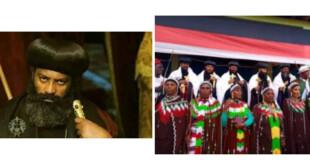| Date |
Event |
| ~ 300 BC |
Archeologists found in 1978 in northern Kenya the pillars that Oromo used in the invention of their calendar system, dated around 300 BC. |
| 1527-1542 |
A Muslim leader, Imam Ahmed Ibn Ibrahim El-Gazi (Grangn), invaded most of Oromia, Abyssinia and Sidama land, which comprised much of the territory of present day Ethiopia, and changed the balance of power in favor of the Muslims. |
| 1550-mid-1700s |
A number of Abyssinian kings tried to militarily defeat Oromo but failed because of the strength of the Oromo cavalry and the unity of the Oromo communities. |
| ~ 1590 |
A monk by the name Bahrey first wrote about the so-called “Oromo Invasion of Ethiopia,” a tale almost invariably accepted by European historians as a fact. |
| 1628-46 |
M. de Almeida had the following to say on the traditional Oromo religion: “The Oromo are neither Christians, moors nor heathens, for they have no idols to worship.” Source: “The History of High Ethiopia or Abassia“ |
| ~ 1700 |
In Yejju and Wallo, the Dynasties of Warra Sheika and Warra Hemanu respectively were founded. |
| 1720s |
King Bakaffa of Gondar devised a policy to bring the Oromo under control. For a few years, the Rayya, Yejju and Wallo Oromo warriors stayed in the Gondar court. Finally, when theprogram to assimilate them failed, they were ruthlessly massacred or driven out. The few who survived the massacre and remained behind live in Gondar town and surrounding areas still today. |
| 1720s |
The Shawan dynasty, founded by Negasi Kristos (1696-1703), recognizing the weakness of the Gondar throne, revolted. Many soldiers and mercenaries were sent to Shawa to fight the rebels. After their defeat, the Gondarians settled on the adjacent Oromo land permanently. When the news of the fertile Oromo land, good treatment and a better life for Gondarians in the occupied Oromo country reached the North, many more migrated to Shawa to join the army and settle there. |
| 1800 |
Limmu, the first of the five Gibe States (Limmu, Guuma, Gomma, Geera and Jimma), was formed. |
| 1810 |
Gumma, the second of the five Gibe States (Limmu, Guuma, Gomma, Geera and Jimma), was formed. |
| 1820 |
Gomma, the third of the five Gibe States (Limmu, Guuma, Gomma, Geera and Jimma), was formed. |
| 1830 |
Jimma, the fourth of the five Gibe States (Limmu, Guuma, Gomma, Geera and Jimma), was formed. |
| Early-1800s
to
Mid-1800s |
Sahle Selassie (1813-1847) declared himself king of Shawa and claimed Solomonic line and independence from the Gondar throne. He continued warring with the neighboring Oromo. However, despite these efforts, the Shawan rulers were unable to break the backbone of the mighty Oromo cavalry and gain control of the fertile Oromo land around Shawa. |
|



